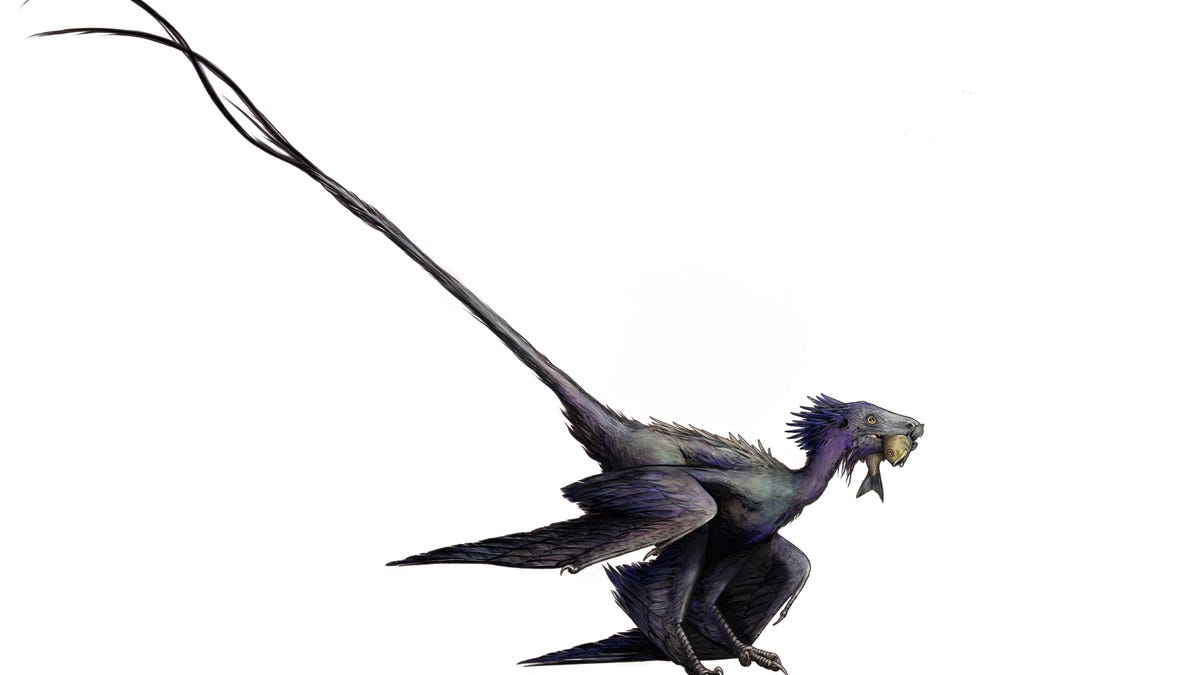Pocket-size raptor sheds new light on the links between dino and bird life
This "dancing dragon," a new species of feathered dinosaur, was discovered in one of the richest fossil deposits in the world.

An artist's rendering of what Wulong bohaiensis might have looked like
A new tiny, winged dinosaur discovered in China is giving the world a glimpse into what feathered fauna looked like 120 million years ago. And it's thanks to what scientists are calling a one-of-a-kind fossil specimen, according to the San Diego Natural History Museum. The fossil could help scientists explore early connections -- and differences -- between birds and feathered dinosaurs.
Although the fossil was discovered a decade ago, the new species, called Wulong bohaiensis, was described for the first time this week in the journal The Anatomical Record. Wulong, Chinese for "dancing dragon," was named for the artful pose of the impressively preserved fossil.
"Studying specimens like this not only shows us the sometimes surprising paths that ancient life has taken, but also allows us to test ideas about how important bird characteristics, including flight, arose in the distant past," Ashley Poust, the paper's lead author, said in a press release from the museum.
Wulong was bigger than a crow and smaller than a raven, said researchers, but its long, bony tail doubled its length. The dinosaur is from the early Cretaceous period and was discovered in one of the richest fossil deposits in the world, the Jehol biota. Researchers said the animal is one of the earliest known relatives of the famous Velociraptor, which lived 75 million years ago. Wulong's closest known relative would have been Microraptor, a small, four-winged dinosaur.
The fossil find marks not just the discovery of a new dinosaur species but it also shows links between dinosaurs and birds, according to the museum. The site of the find is a place that was rich in birds early on, and home to pterosaurs and bird-like dinosaurs too.
"There was a lot of flying, gliding and flapping around these ancient lakes," said Poust. "As we continue to discover more about the diversity of these small animals it becomes interesting how they all might have fit into the ecosystem ... It was an alien world, but with some of the earliest feathers and earliest flowers, it would have been a pretty one."
The skeleton described in the new paper is remarkably complete.
A technician begins the CT scan of the dinosaur at Dalian Medical University Hospital in China.
The fossil of the new dinosaur is alongside a line drawing of the skeleton and a close-up of the tail feathers.
Ashley Poust at the Dalian Natural History Museum working on Wulong, the dinosaur described in the new paper

